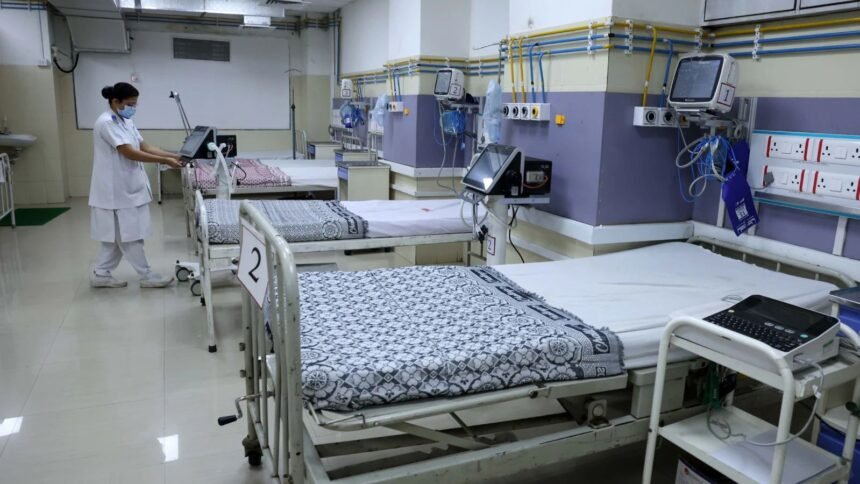While government hospitals make up a bulk of hospitals empanelled under Ayushman Bharat, the health insurance scheme is largely being utilised by people to seek care in private-sector hospitals and at higher costs.
The private sector accounts for over half of all the treatments approved and nearly two-thirds of the treatment cost received by beneficiaries under the scheme, according to the recently released annual report of the National Health Authority that runs the scheme.
Over nine crore instances of treatment — costing Rs 1.29 lakh crore — have been accessed under the Centre’s flagship health insurance scheme in the seven years since its inception.
Of the total 31,005 hospitals empanelled under the scheme, only 45% were private sector-run. Yet, 52% of the 9.19 crore hospitalisations under the scheme were in private-sector hospitals, the report revealed.
Nearly two-thirds or 66% of the total treatments worth Rs 1.29 lakh crore were in the private sector, according to the report.
This trend was first pointed out by The Indian Express during an earlier investigation on data from the scheme.
Data from the report also shows that less than half the eligible beneficiaries hold the Ayushman Card.
Story continues below this ad
According to the report, the most commonly sought treatments under the scheme are haemodialysis and common medical maladies such as fever. Nearly 14% of all treatments accessed under the scheme since its inception in 2018 has been haemodialysis — a procedure that filters a patients blood when they have kidney failure. For most patients, the procedure has to be repeated two to three times a week, which could be a reason behind the high number.
Other than that, the most common treatments were for fevers (4%), gastroenteritis or stomach upset due to bacterial or viral infection (3%), and animal bites (3%). The three top specialities under which treatment was received in 2024-25 were general medicine, ophthalmology, and general surgery.
States such as Uttar Pradesh and Punjab were among the top in terms of both the number of patients travelling out of the state for treatment and those coming in for treatment. One of the key benefits of the scheme is portability that allows patients to seek treatment not only at the place of their residence but any other state.
Data from the report shows that the highest in-migration — since the inception of the scheme to March 2025 — has been to Chandigarh, accounting for 19% of the portability cases. This was followed by Uttar Pradesh (13%), Gujarat (11%), Uttarakhand (8%), and Punjab (8%). Surprisingly, the data on out-migration shows that UP also accounted for 24% of the total portability cases going out of a state. Similarly, Punjab accounted for 9% of the total out-bound cases. Other states with high out-bound cases were Madhya Pradesh (17%), Bihar (16%), and Punjab and Himachal Pradesh (both 7%).
Story continues below this ad
The report showed that the government’s plan to create a digital infrastructure to share health records across facilities is also well underway. Under this scheme, which was launched by the National Health Authority in 2021, 50 crore health records have already been linked. Around six out of 10 persons in the country have the ABHA number — the 14-digit number that creates a cloud-based account for storing health records digitally.
The government has also been trying to register all healthcare facilities and personnel on the platform to create the digital ecosystem. The annual report shows that 3.8 lakh health facilities, making up around 38% of the total facilities in the country, have already been registered. Besides, 5.8 lakh health personnel, accounting for around 26% of the total numbers, have also been registered on the system.








